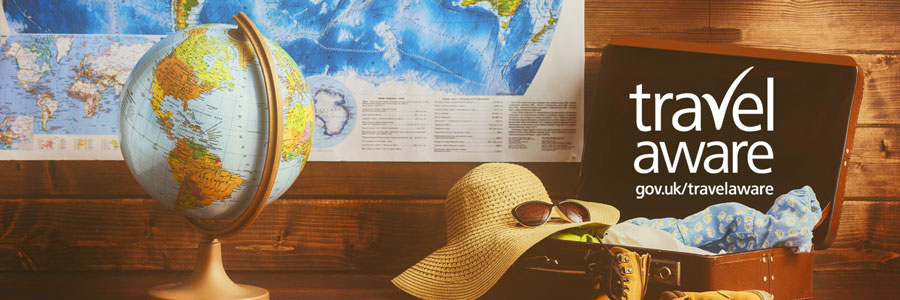Driving In Australia
Key Differences
Buchanan Highway, Savannah Way Tourism Drive, NT. Photo credit: Peter Eve/Tourism NT
They may drive on the sensible side of the road (like us)…
…But not everything on Australia’s roads is the same. If you’re hiring a car in Australia you’ll need to produce your driving licence and credit card.
International Driving Permit
In addition to your licence and credit card, some states will require an International Driving Permit. You can find out which ones here.
You can buy the permit online from the AA and the RAC, or in person from main Post Offices up to 3 months prior to your trip. Permits are valid for one year.
Driving in Australia – key differences
Age: Minimum driving age is 16 in the Northern Territory, 18 in Victoria and 17 everywhere else, BUT all states are reviewing legislation to make the limit 18.
The age at which you can hire cars or motorhomes/campers in Australia differs from company to company. Usually it’s 21, although if you’re under 25 you may well find the cost of deposit, hire and insurance rather scary. Things improve once you hit 25.
Right or left? Vehicles are mostly right-hand drive and you’ll be driving on the left hand side of the road as in the UK
Manual or automatic? There’s a near 50/50 split between manual and automatic gearboxes, so make sure you state which you’d prefer.
M or km? Speed and distance are measured in km rather than miles.
Distance driving in Australia: Some stretches of highway can be ruthlessly long and monotonous. Fatigue is a major risk, as is inadvertently picking up a speeding ticket. Check your speed and take advantage of any rest stops as they can be few and far between.
Aboriginal permits: Some of Australia’s more remote areas are owned by the local Aboriginals and you’ll need a permit to pass through. Even with a permit, local ceremonies can prevent you from travelling through. Permit details vary so check with your local state or territory for specific information.
Fuel and water: Keep both regularly topped up and carry spare tanks. When your next petrol station is 150km away you can’t risk driving on fumes.
Navigation: Many Australian car hire companies supply sat navs suitable for outback exploration. If you’re using your own, check it has the appropriate maps before you set off. Take a paper map too – so you can navigate should the signal or power fail.
In an emergency: Hire a satellite phone rather than relying on your mobile signal. Your car hire company may be able to include this in your deal.

Cape York Road Signs
Hello Officer. Staying out of trouble
- Always carry your licence whenever you’re driving.
- Don’t drive whilst using a mobile phone (it’s illegal).
- Wear a seatbelt (that goes for your passengers too).
- Don’t drink (any alcohol) and drive in Australia. The limit in Australia is much lower than in the UK (20 to 50 milligrams per 100 millilitres as opposed to 80 milligrams per 100 millilitres in the UK). A bag of wine gums would most likely send you over.If you’re a learner, provisional or inexperienced driver (ie you’ve held your licence for less than 3 years) the limit is zero. Many states also have a zero drug limit.
- Speed limits vary from state to state but are usually well signposted. The typical limit in cities is 60 kph (about 35 mph). Highways are usually 110 kph (around 68 mph).
- Don’t pick up hitchhikers – it’s illegal on motorways, entirely banned in some states and risky in all.
- Don’t park facing oncoming traffic.
Like cities everywhere, Australia’s major centres are big and bustling and parking can be expensive. Take particular care in Melbourne where trams occupy the middle of the road.
A number of major cities have toll roads but good signage gives you plenty of warning to get off them if you don’t want to pay.
Driving In The Outback?
Most outback roads are gravel or dirt. They can be hard on the spine and hard on your car. You may not need a 4×4 for popular routes but if you’re going off the beaten track you definitely will.
Hired car? Make sure you know how to engage the 4×4.
Roads can easily get washed away or flooded. Ask the locals whether your route is passable.
Tell someone where you’re going – and don’t go alone.
Carry plenty of water – for you and the car.
Don’t drive at night. Wildlife is most active after dark and hitting a kangaroo or wallaby can cause real damage. Some Australian car hire companies won’t permit travel after dark for this reason. Check your details.
Approach road trains (huge trucks) with caution. Slow down if one’s approaching. Give yourself 2km of clear road to overtake.
Emergency? Dial 000.
You May Also Be Interested In…
Ask, Answer or Browse
Search the forum or ask a question
What You Need To Know
It's all about the three ex’s: experience, expectations and execution
Going To Australia?
Plan your trip here
Subscribe To Our Newsletter
Get the latest travel tips and info straight to your inbox.





